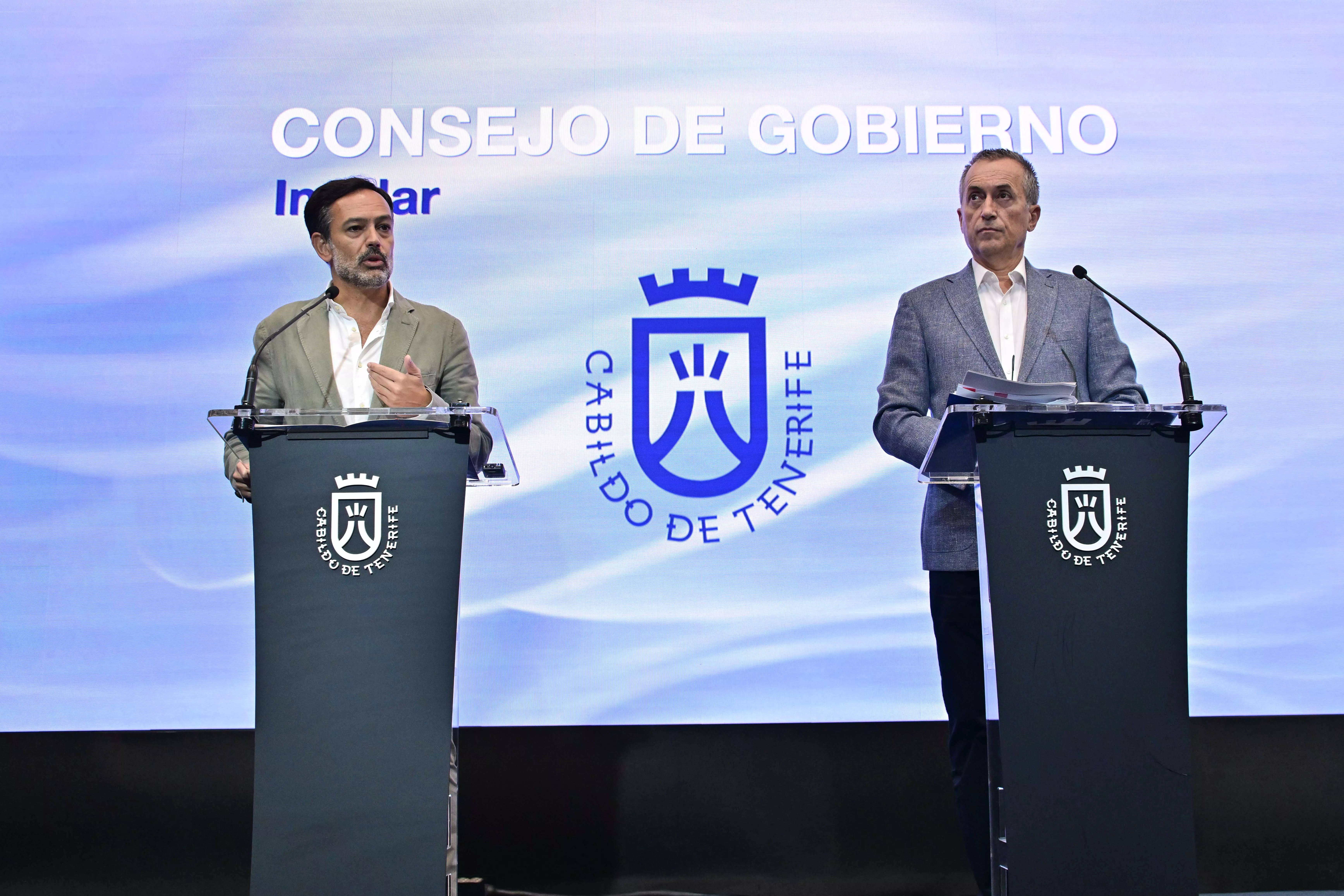The new exit ramp leading to Oroteanda, situated on the TF-1 motorway in Las Chafiras, was inaugurated yesterday during a ceremony attended by the President of the Canary Islands, Fernando Clavijo, along with the Minister for Public Works, Housing and Mobility, Pablo Rodríguez; the President of the Cabildo of Tenerife, Rosa Dávila, and the Mayor of San Miguel de Abona, Arturo González.
This new infrastructure is part of a comprehensive initiative aimed at enhancing mobility in the south of Tenerife, with the primary objective of alleviating traffic congestion in Las Chafiras and facilitating the flow of the over 74,000 vehicles that travel along this route daily.
Approved in 2017 by the Ministry of Public Works and Transport of the Government of the Canary Islands, the project was awarded to the consortium Ferrovial Agroman-Ten Asfaltos-Excavaciones Oscar del Castillo and had an original budget of nearly 22 million euros. Despite the initial timelines, which stipulated an execution period of 30 months, the project has experienced delays exceeding three years until its recent completion. This connecting road, linking San Isidro with Las Américas, is part of the construction of the third lane of the TF-1, although it stands as a separate project.
In addition to the exit ramp, the project also includes the upgrading of secondary roads that converge in this area, such as roads TF-65, TF-652, and TF-655, as well as certain streets within the urban layout of Las Chafiras. These new enhancements, which involve the development of these roads as well as improvements and relocations of bus stops, have been designed to optimise the movement of pedestrians and individuals with reduced mobility, increasing accessibility options and enhancing safety in the vicinity.
FULLY OPERATIONAL
The Mayor of San Miguel was responsible for cutting the inauguration ribbon and expressed his gratitude to both administrations for their cooperative efforts throughout the undertaking of the project.
The Oroteanda interchange is now fully operational, allowing traffic to flow in both directions towards Santa Cruz and Las Américas via a series of roundabouts and feeder roads. The infrastructure comprises an elevated roundabout positioned above the main trunk of the TF-1, connected by two circular overpasses that facilitate the integration of the TF-65 and the routes leading towards Santa Cruz, as well as the southbound feeder roads.
Fernando Clavijo remarked that this opening “will alleviate congestion in a heavily-trafficked area” and highlighted that it is “a long-standing request” that he has been consistently reminded of by both the Mayor of San Miguel and the CEST, Círculo de Empresarios del Sur de Tenerife, defining the status of this commercial zone as “one of the primary industrial estates on the Island.” Javier Cabrera, president of CEST and a vocal critic regarding the progress of this project, labelled the completion of the road as “one more step in an action that has taken far too long to finalise.”
Concerning the upcoming phases of the project, work is currently underway on environmental restoration, alongside the installation of foundation bases for the final signage. The concluding stage of the project incorporates the placement of the road markings along the route, which will enable the definitive completion of the infrastructure.
In her address, Rosa Dávila also emphasised the significance of this work on the TF-1 motorway, describing it as “an essential artery through which more than 74,000 vehicles travel daily, connecting the northern and southern parts of the Island.”
She also took the opportunity to extend her thanks to the Government of the Canary Islands and all participating institutions “for their unwavering support and dedication to this project.” The President of the Cabildo noted that this initiative is crucial for enhancing the connectivity of the TF-1 and “resolving the ongoing issue” of traffic jams affecting the Island, which is one of the main concerns on the agenda for the southern population.
‘COASTAL PIMELIA TINERFEÑA’
The Minister for Public Works addressed one of the most contentious topics surrounding the development of the third lane of the TF-1: the more than three-year delay experienced. “The circumstances have been varied. I don’t know if you recall that, as soon as this project commenced, a beetle was discovered” – a reference to the coastal Tenerife pimelia, listed among the threatened species in the Canary Islands – also noting that undertaking such work while traffic remains operational “creates various challenges and delays.”
















